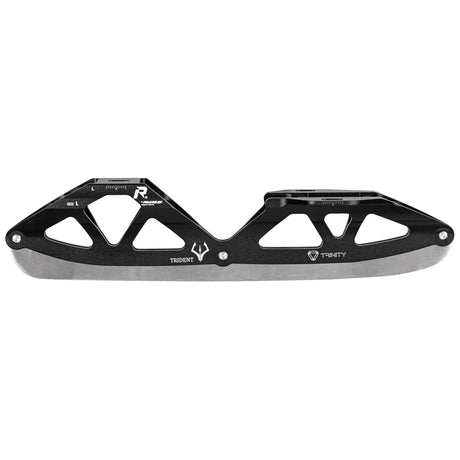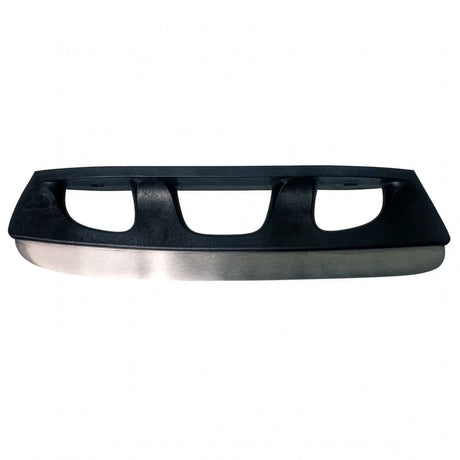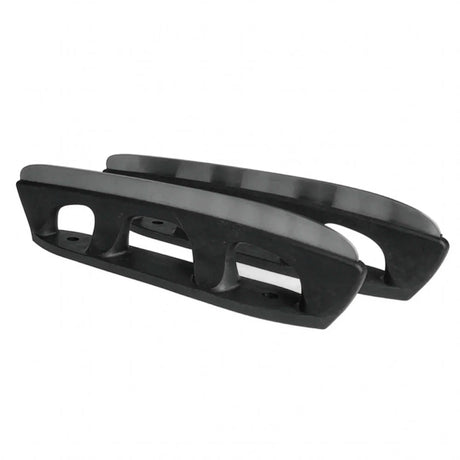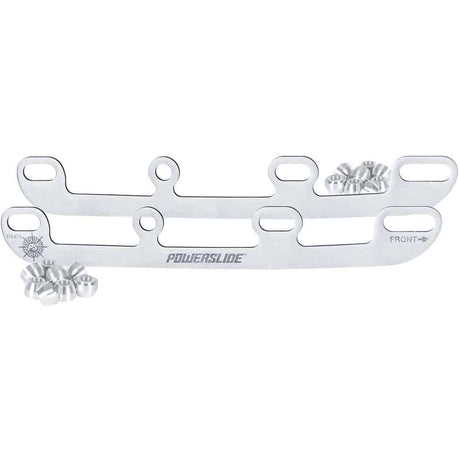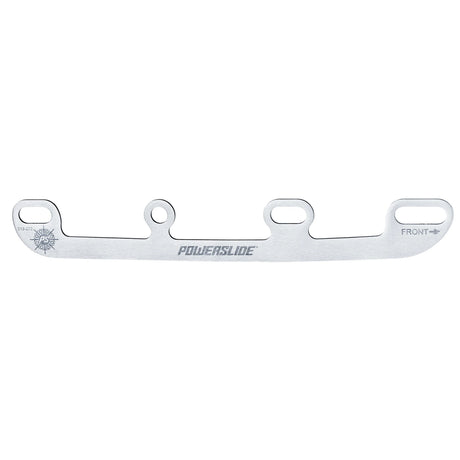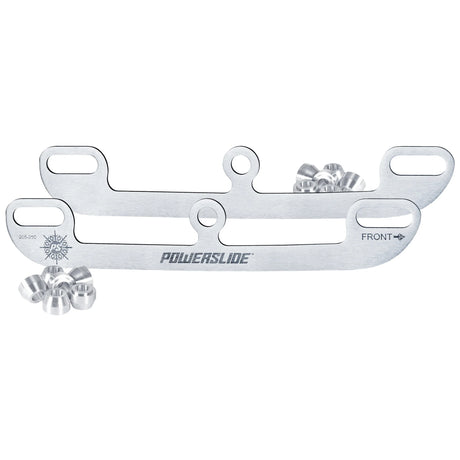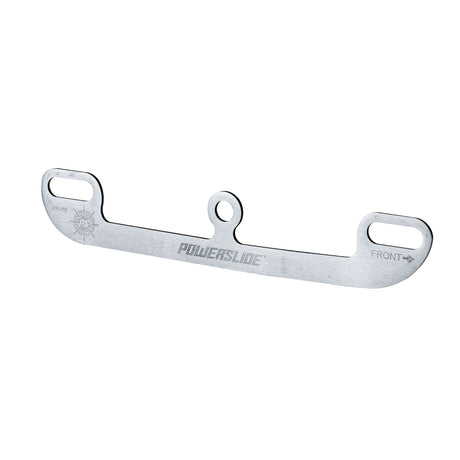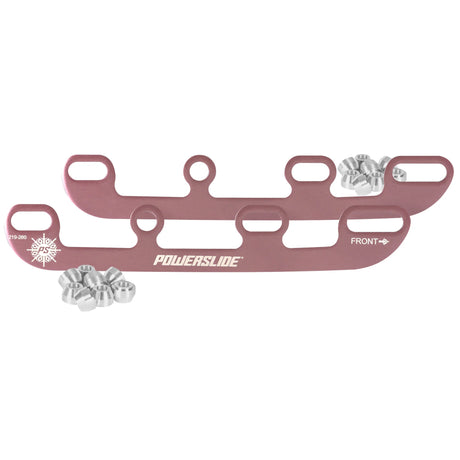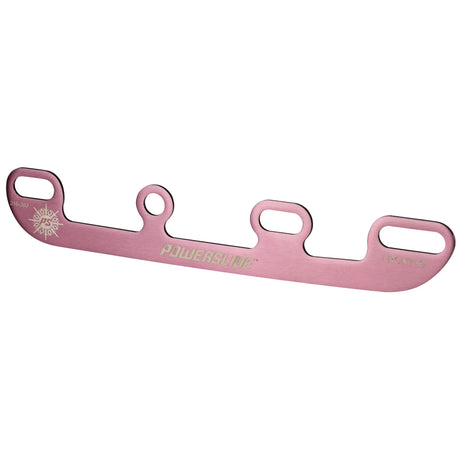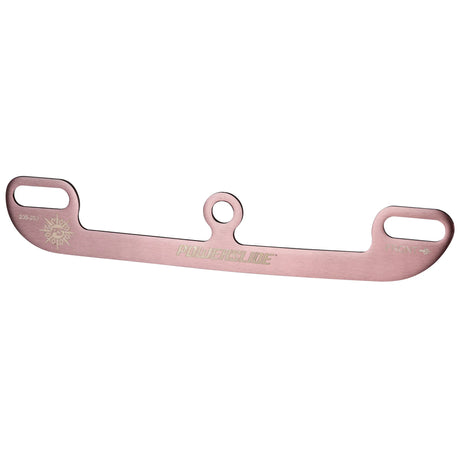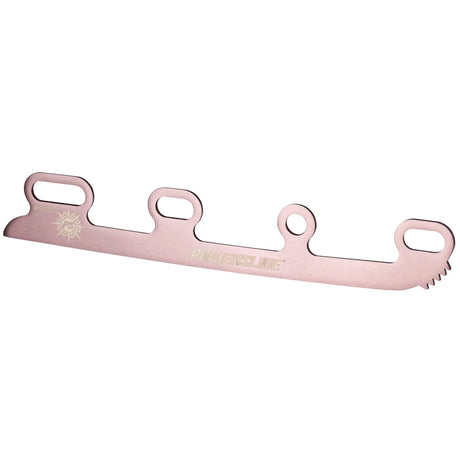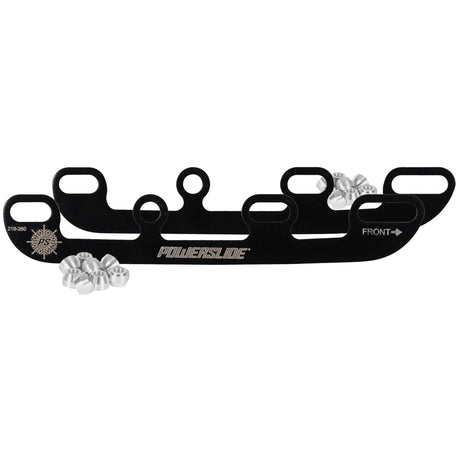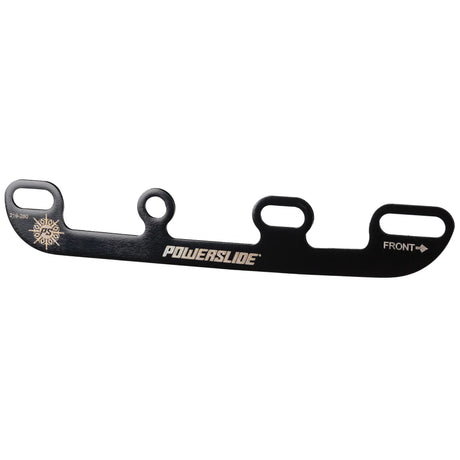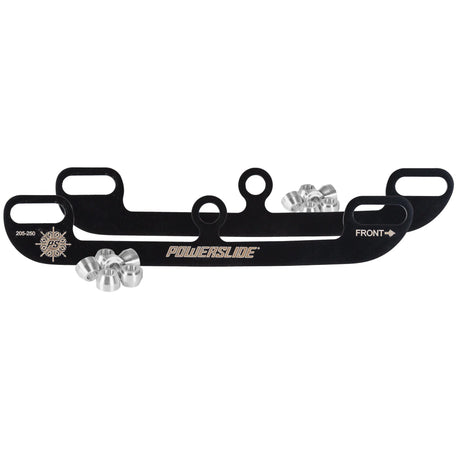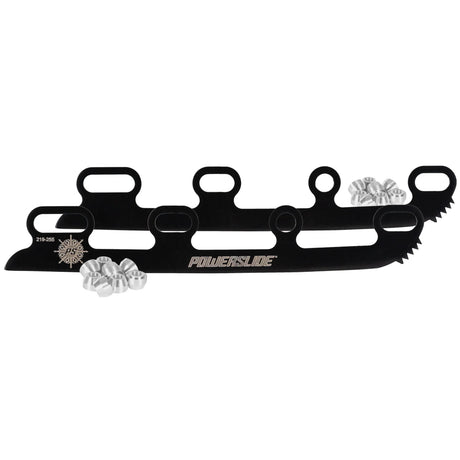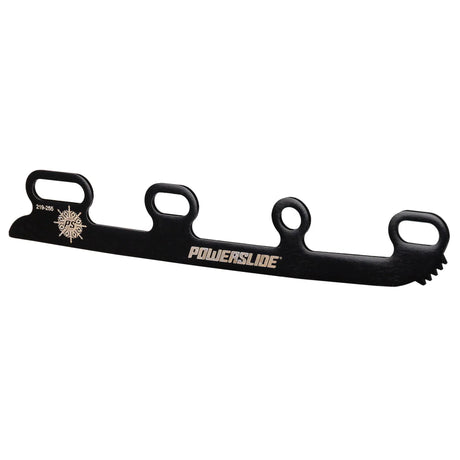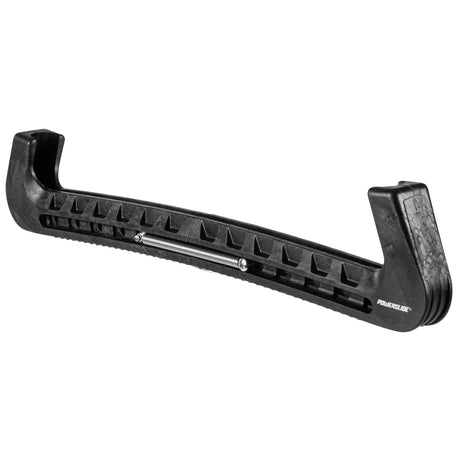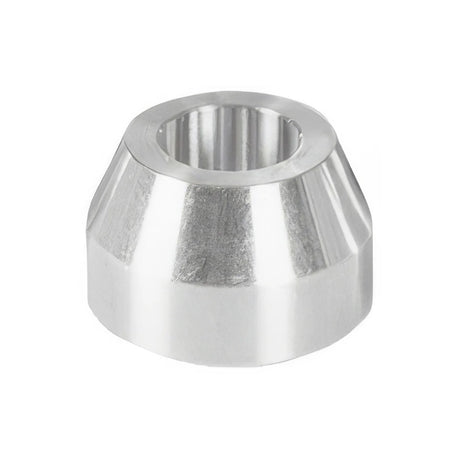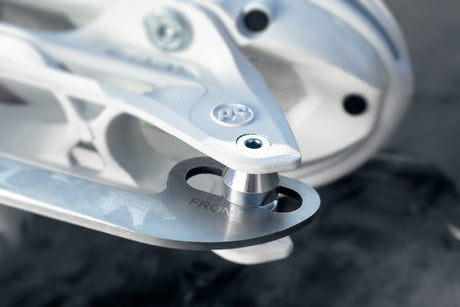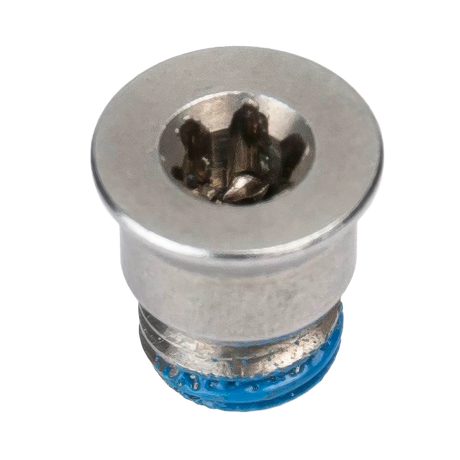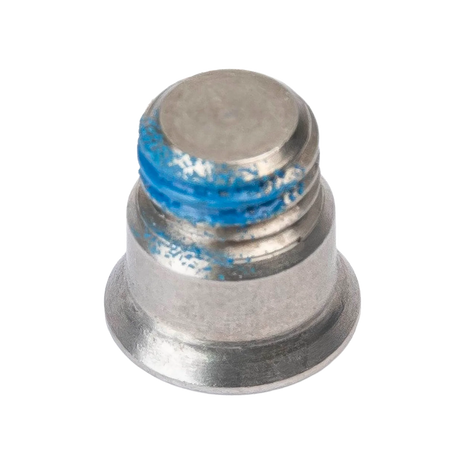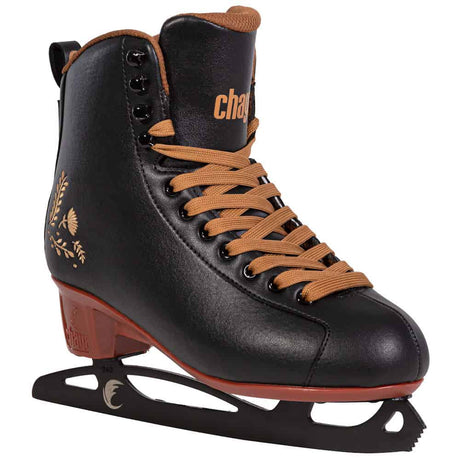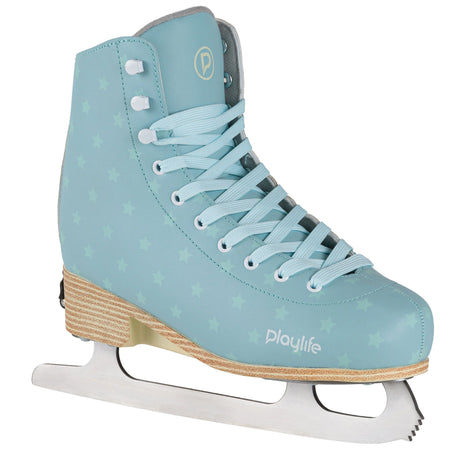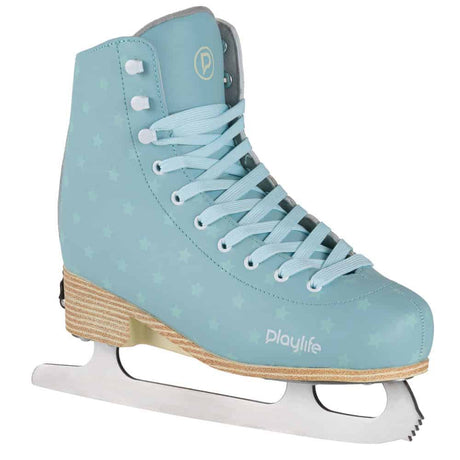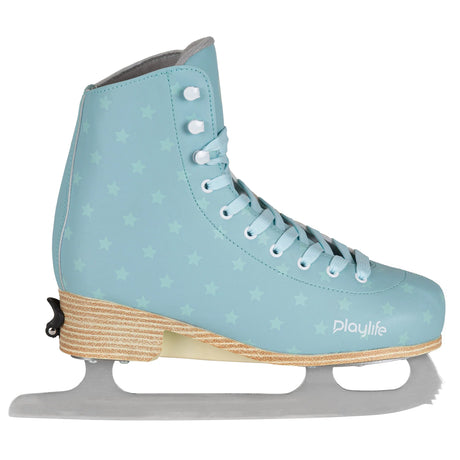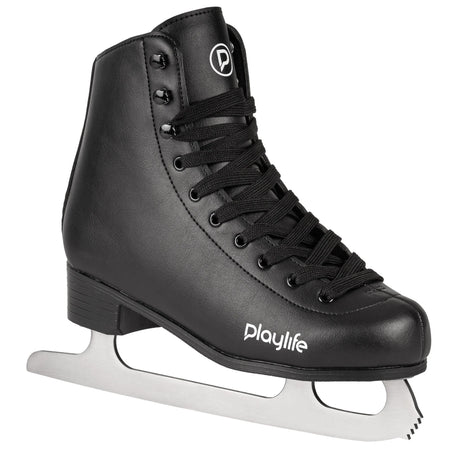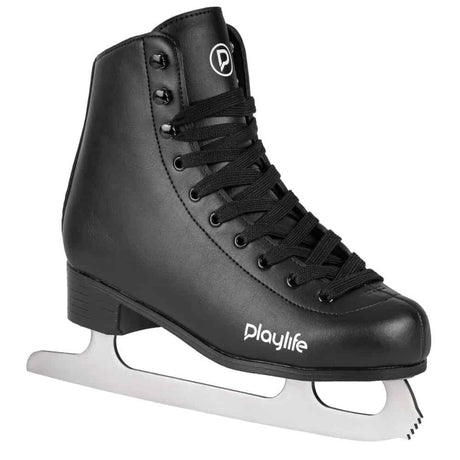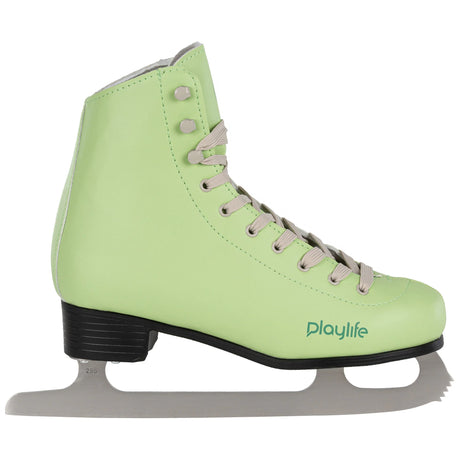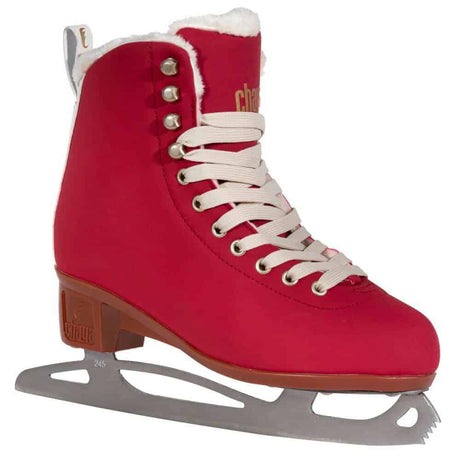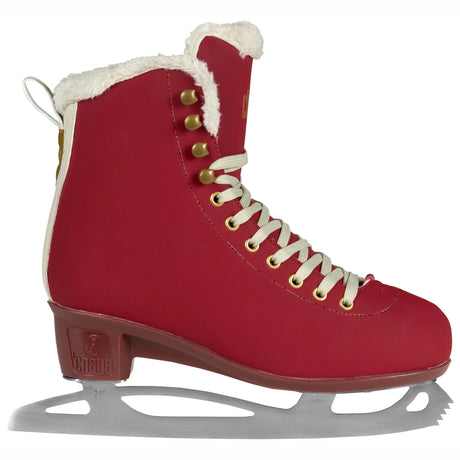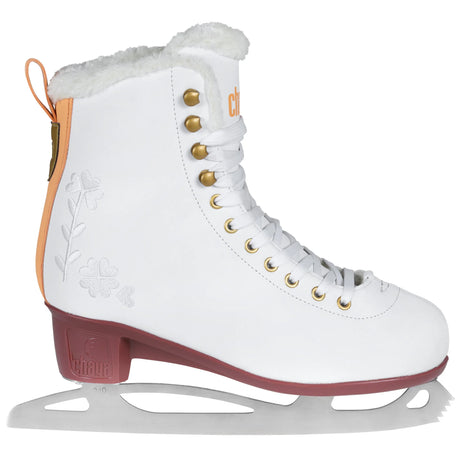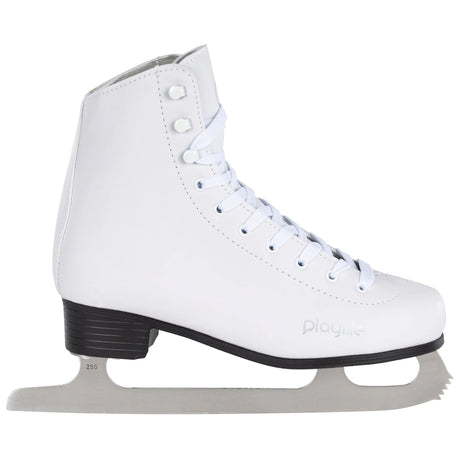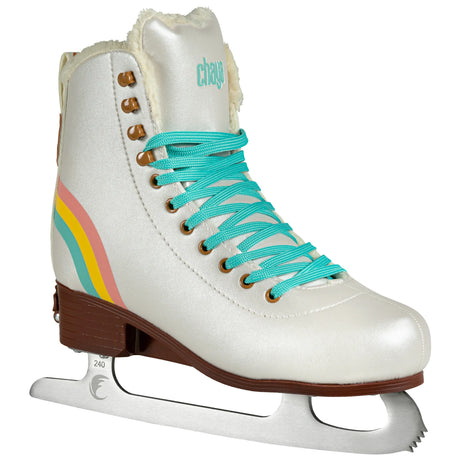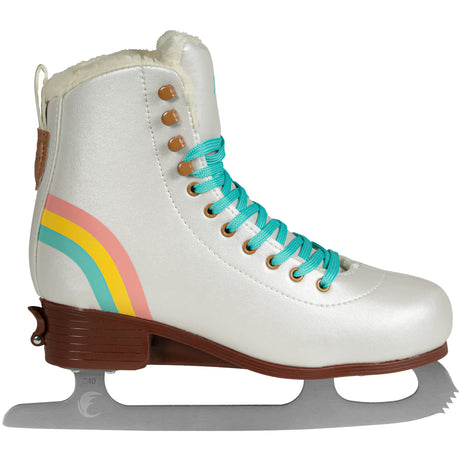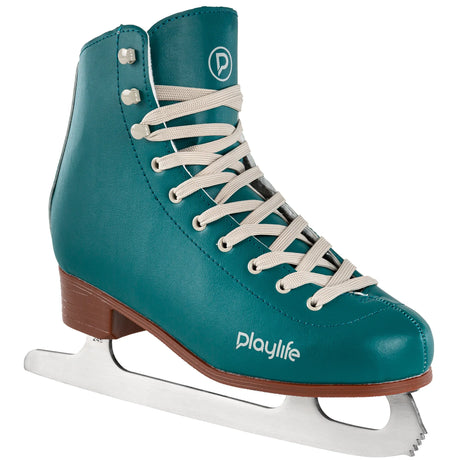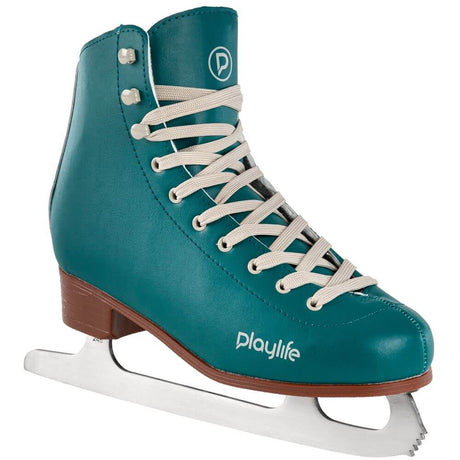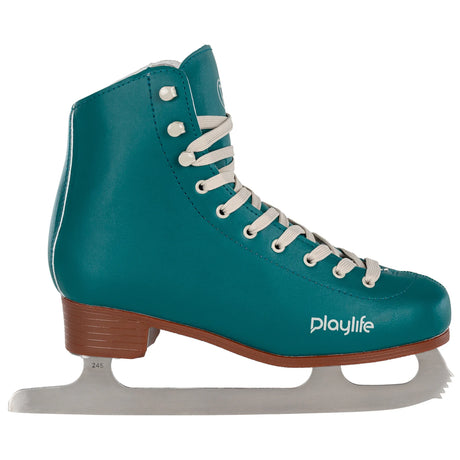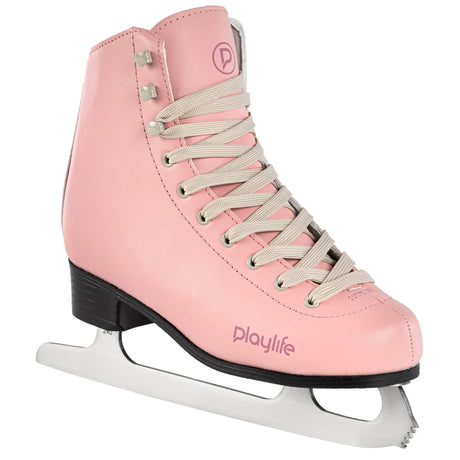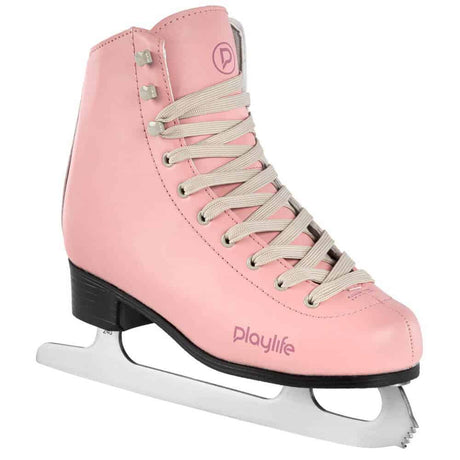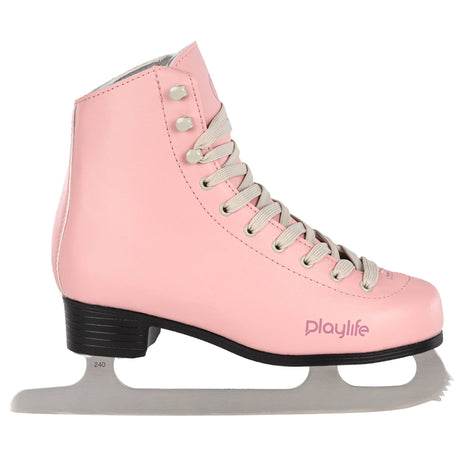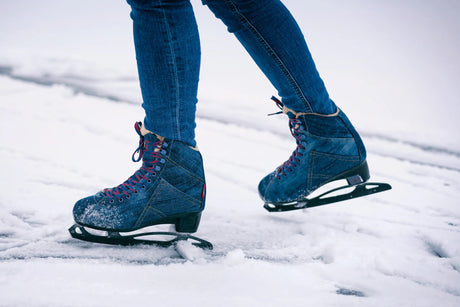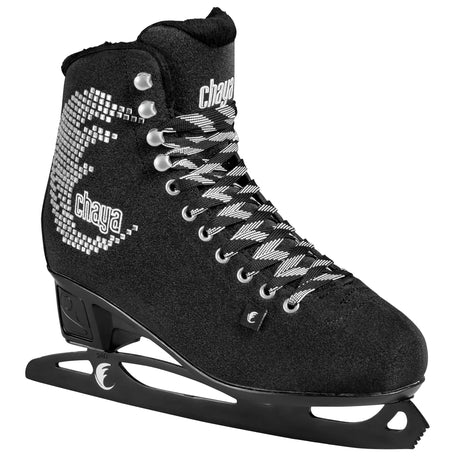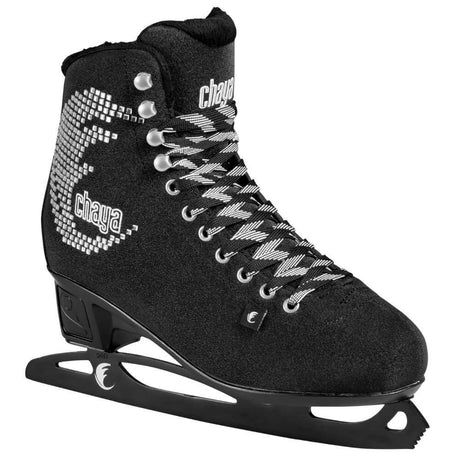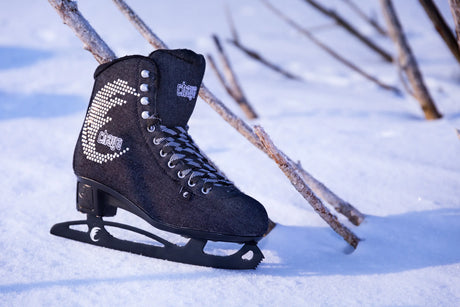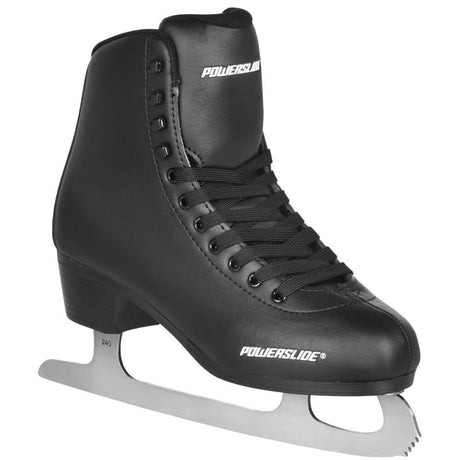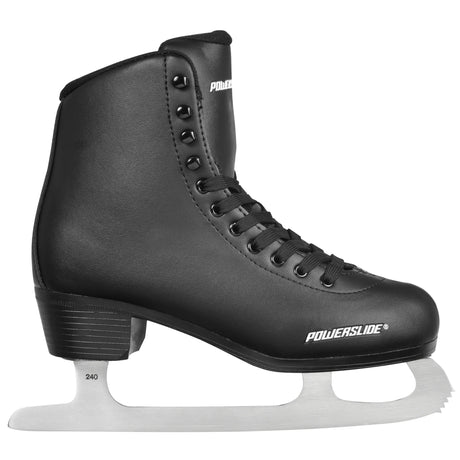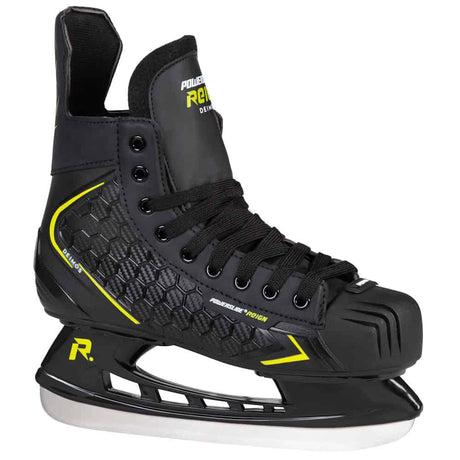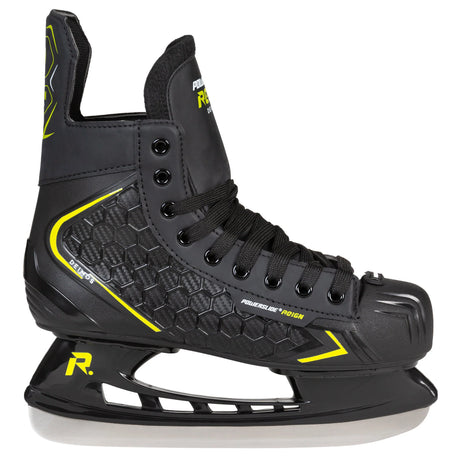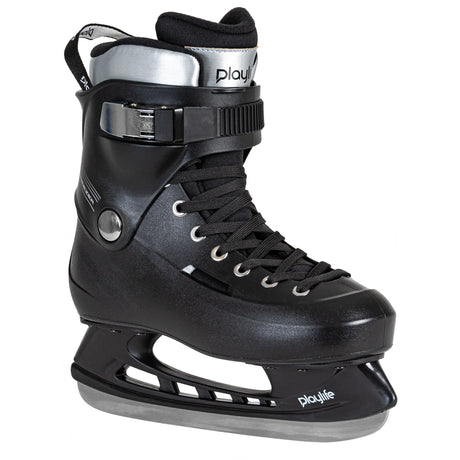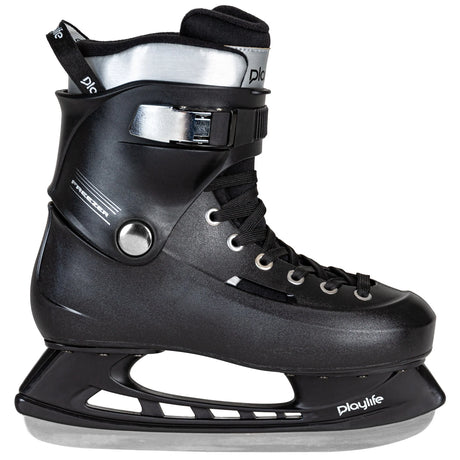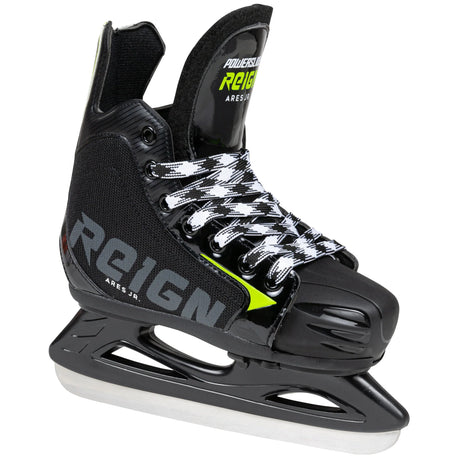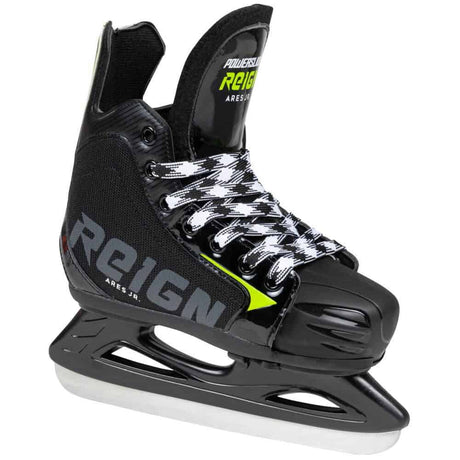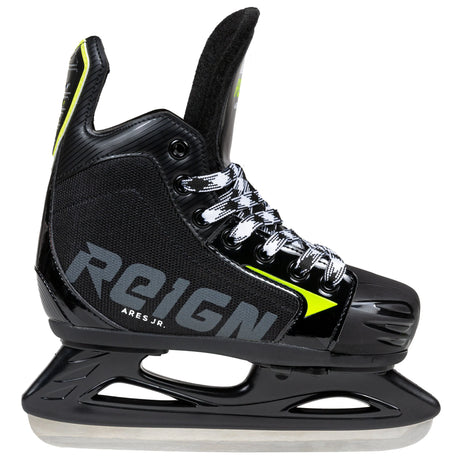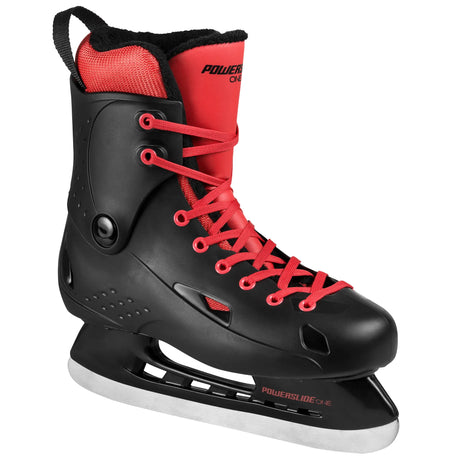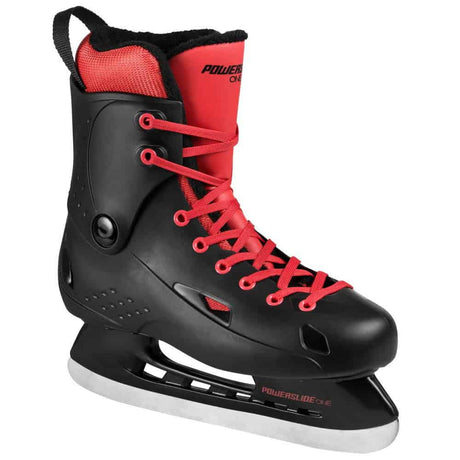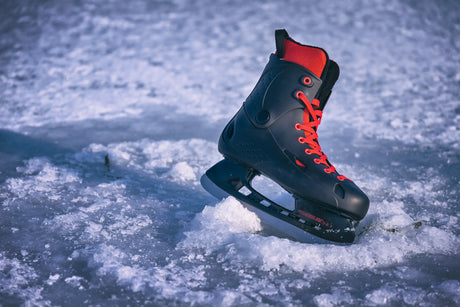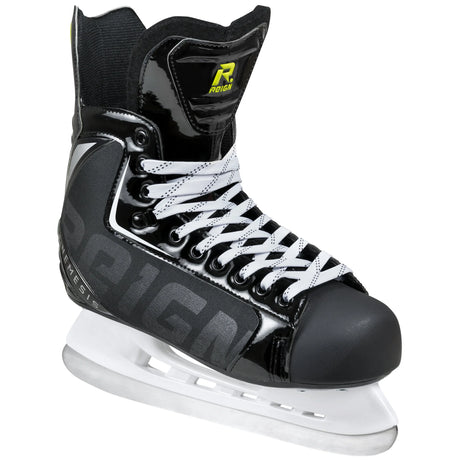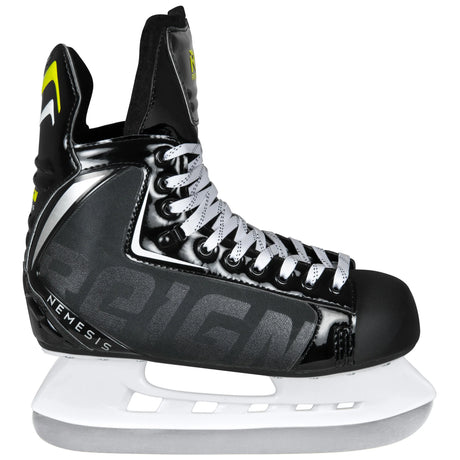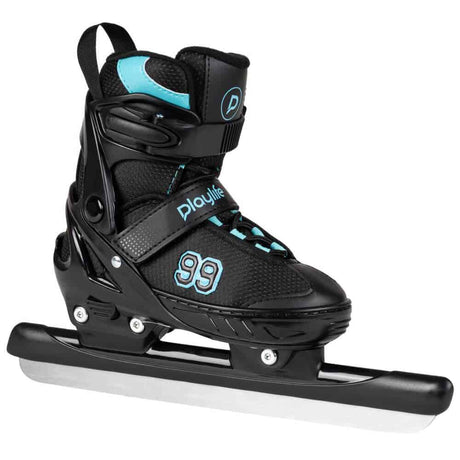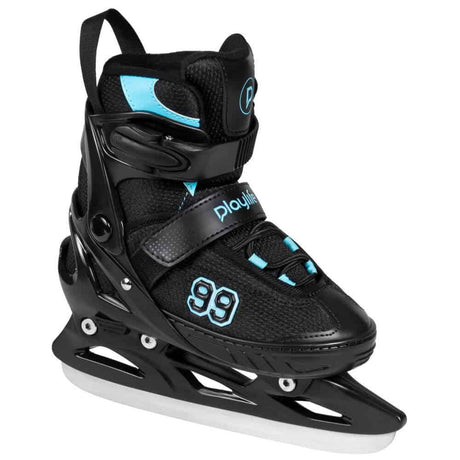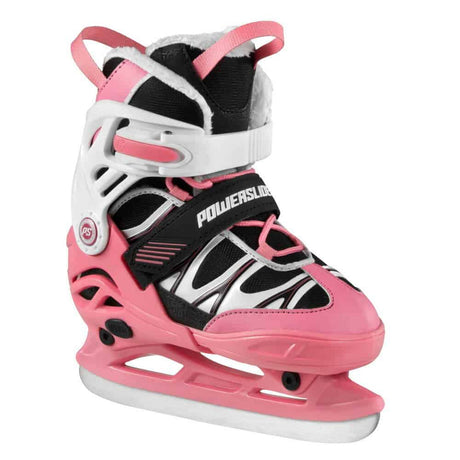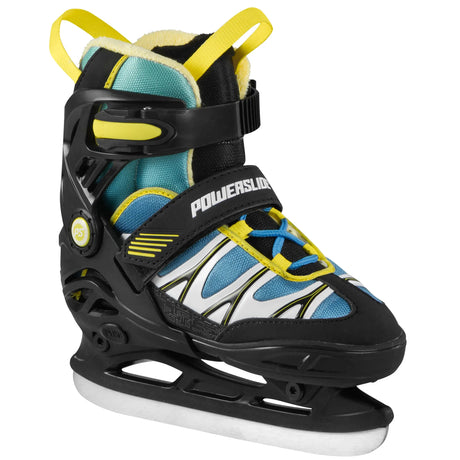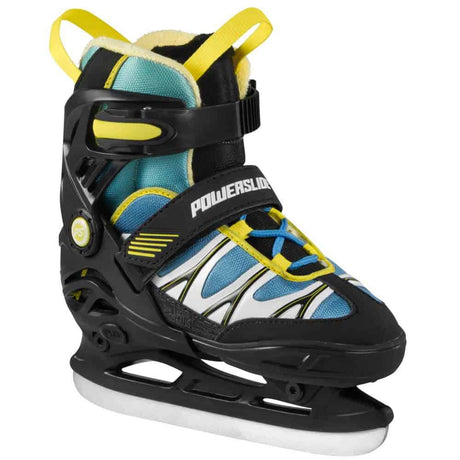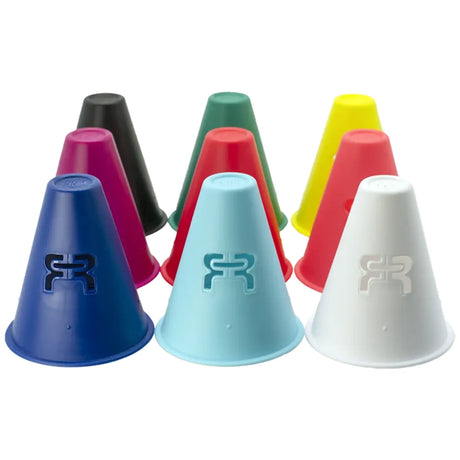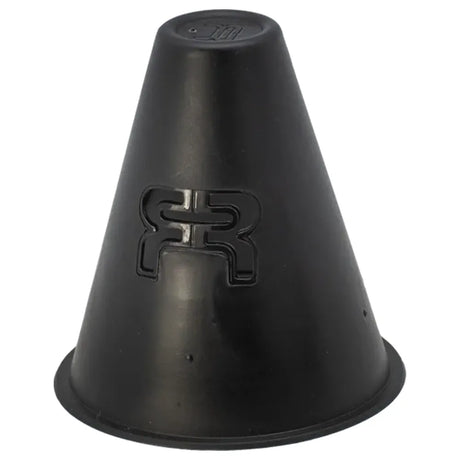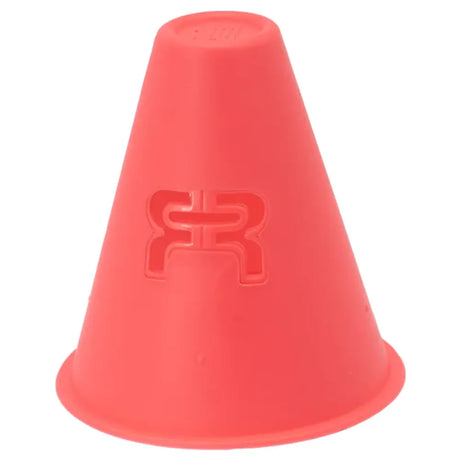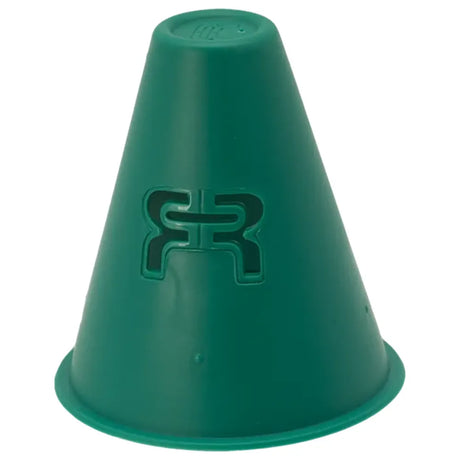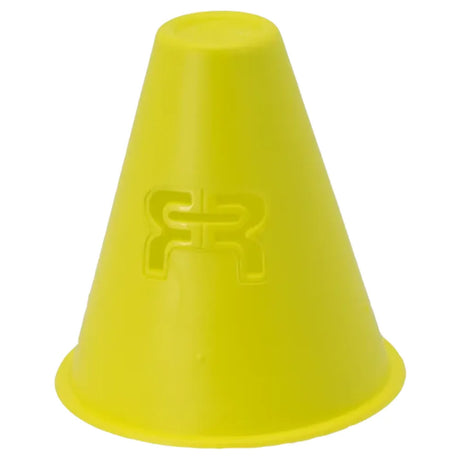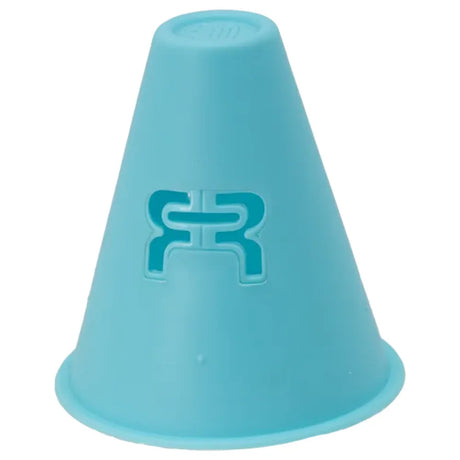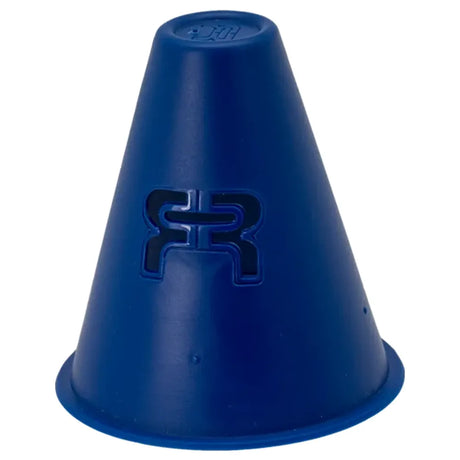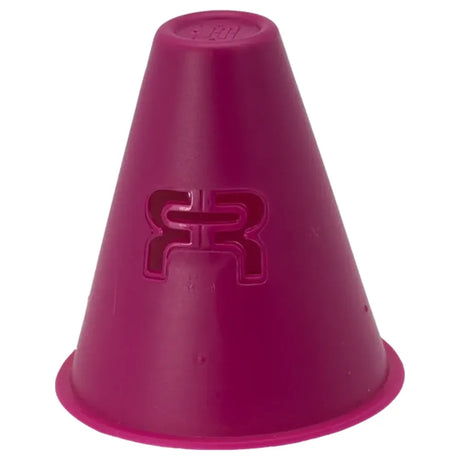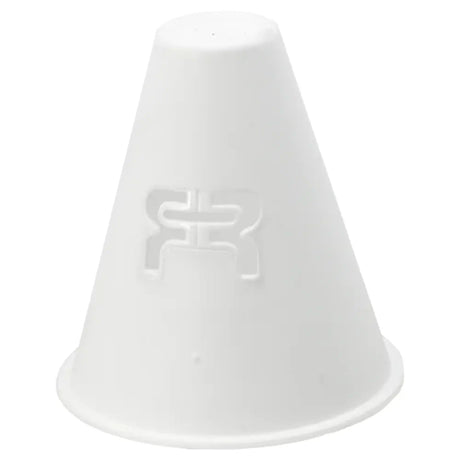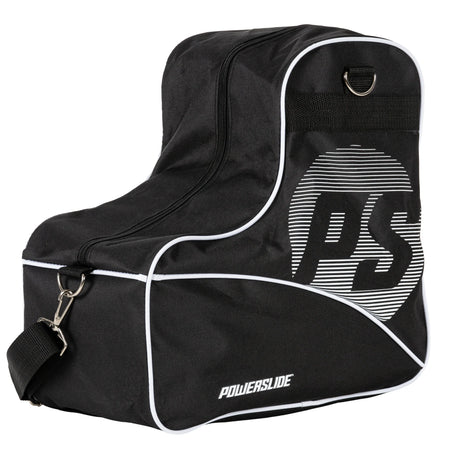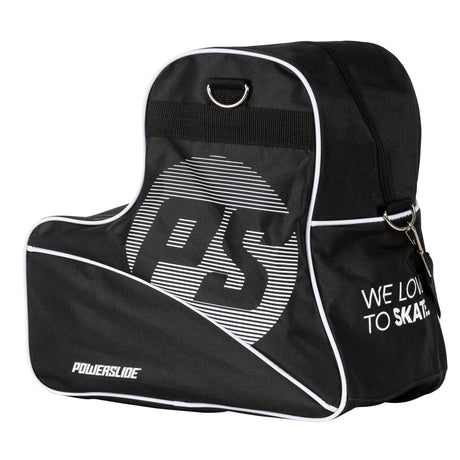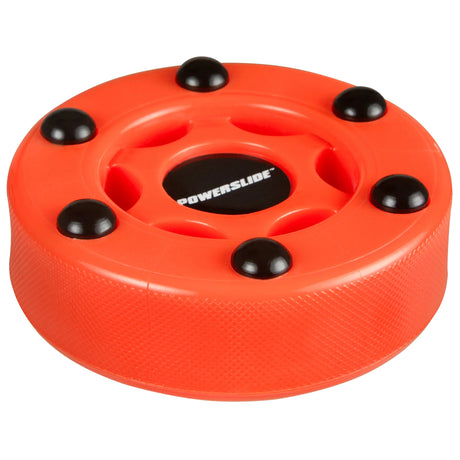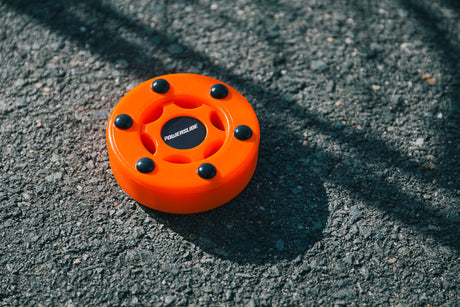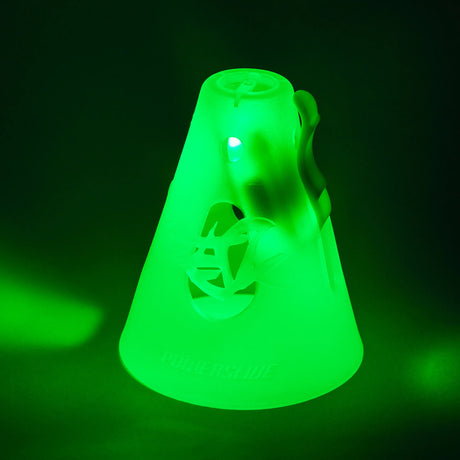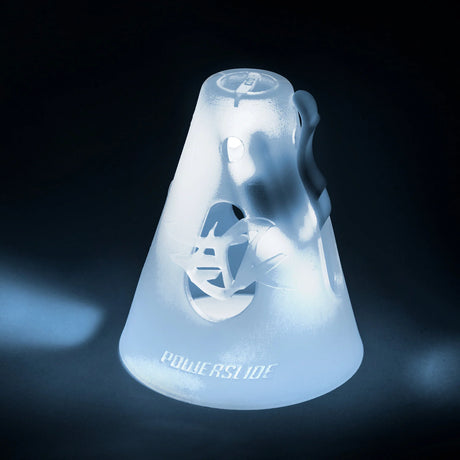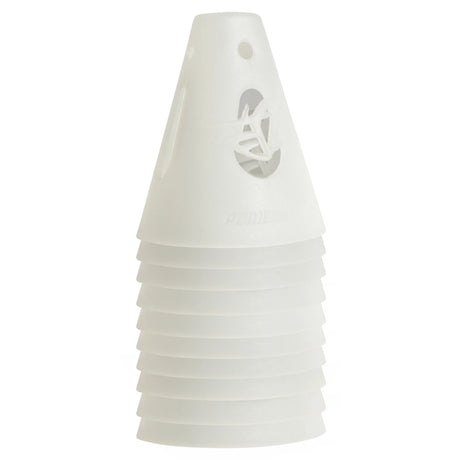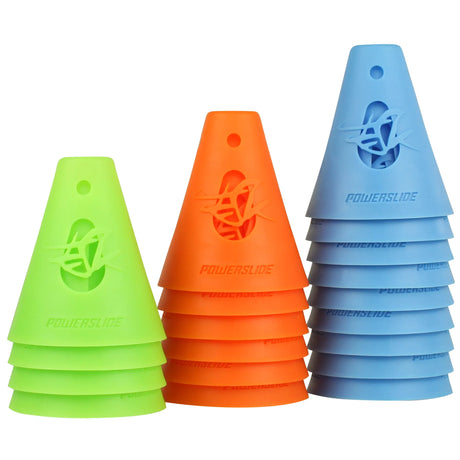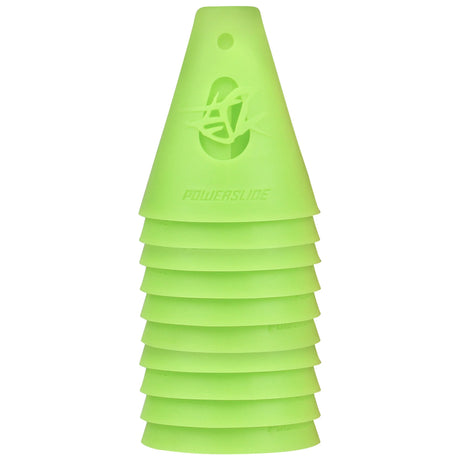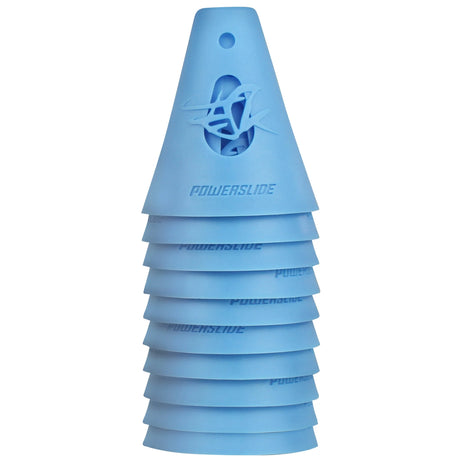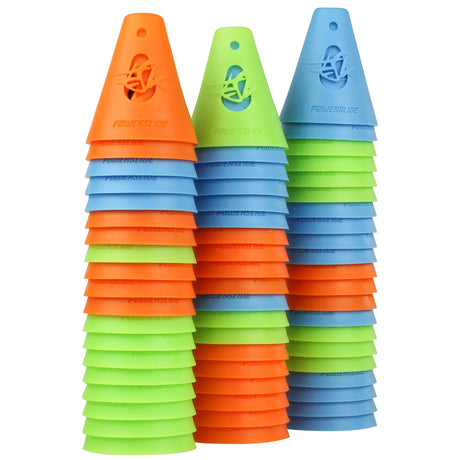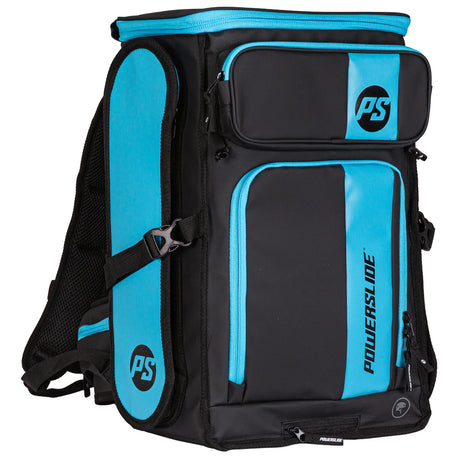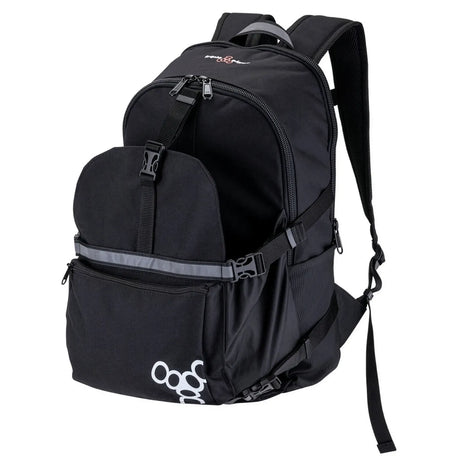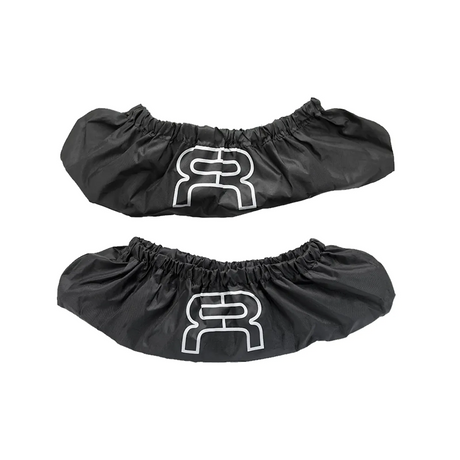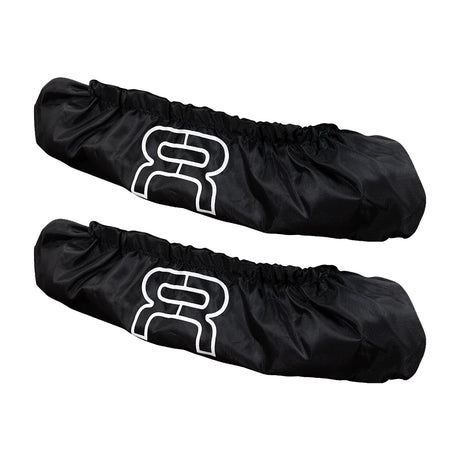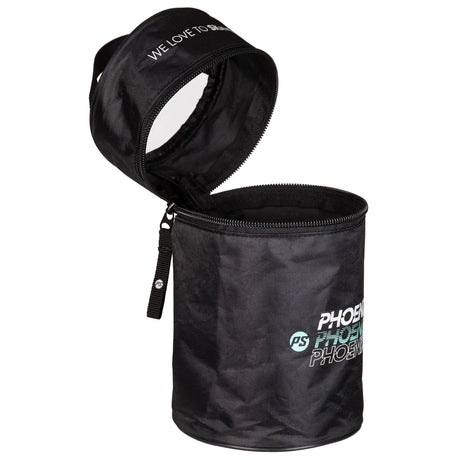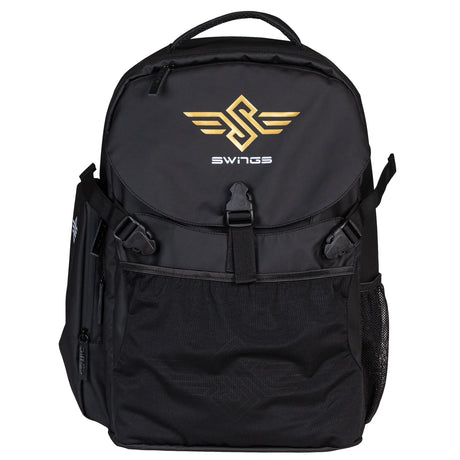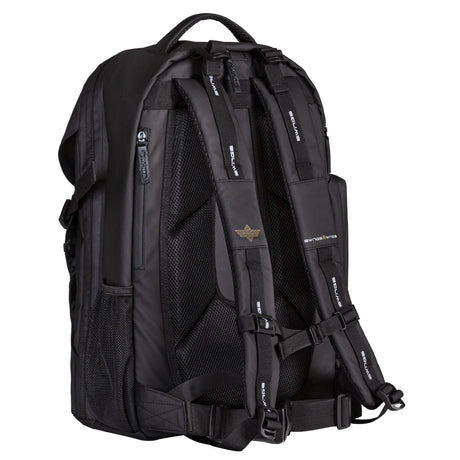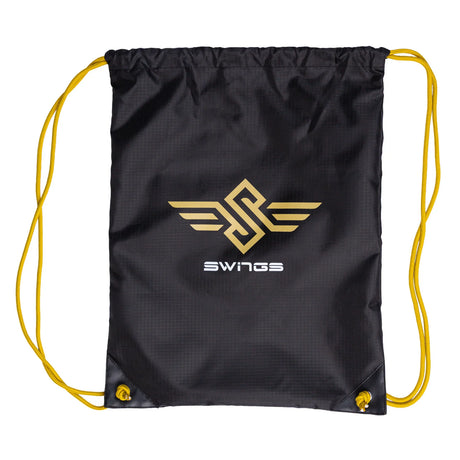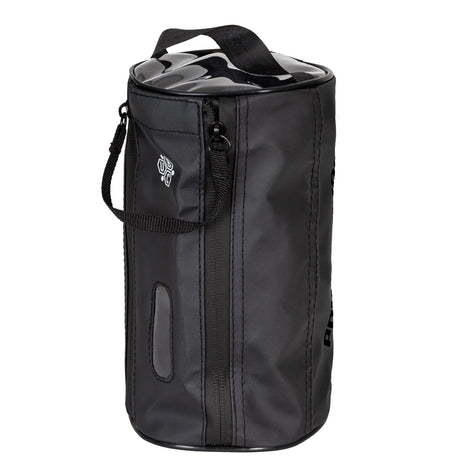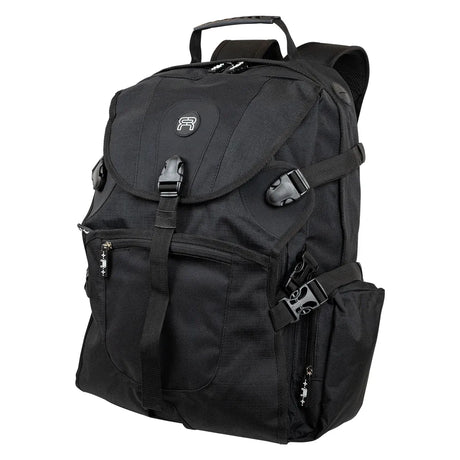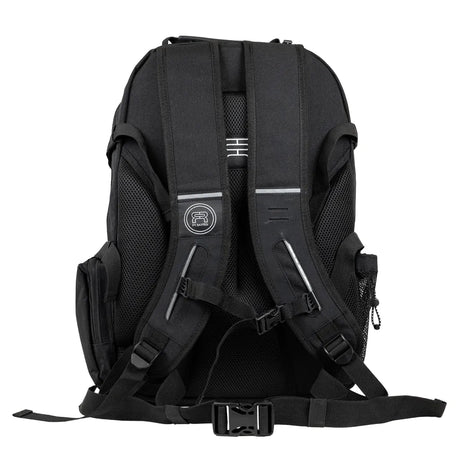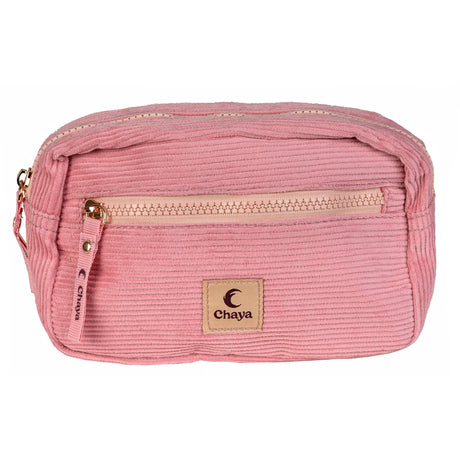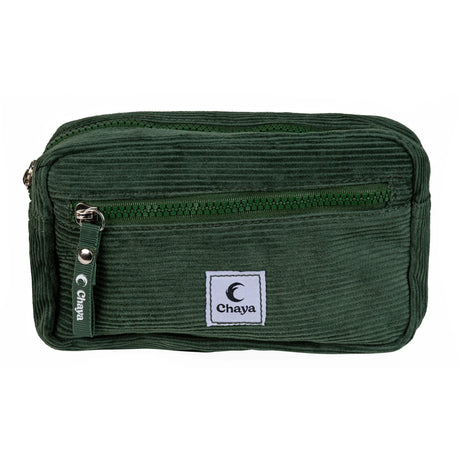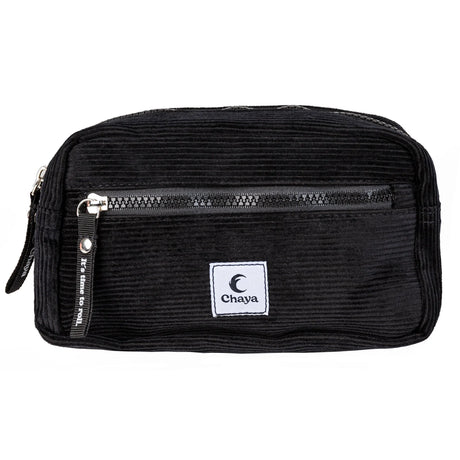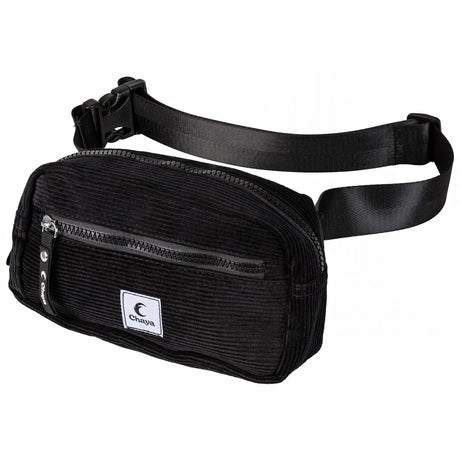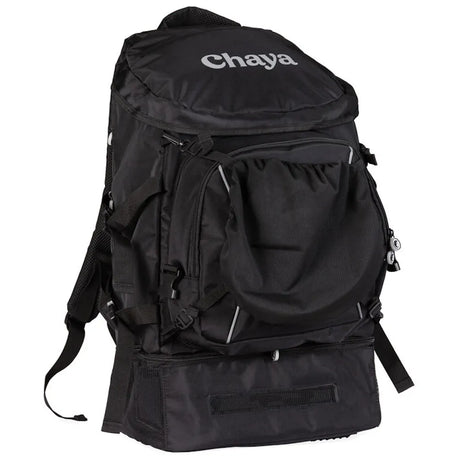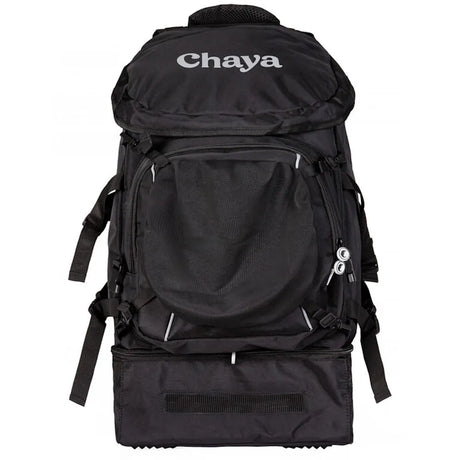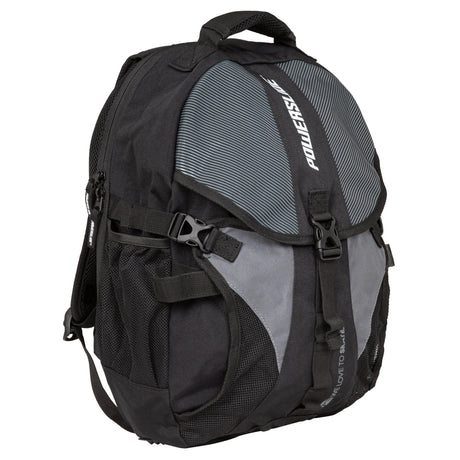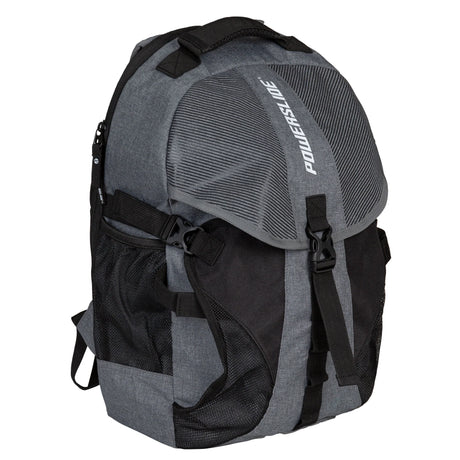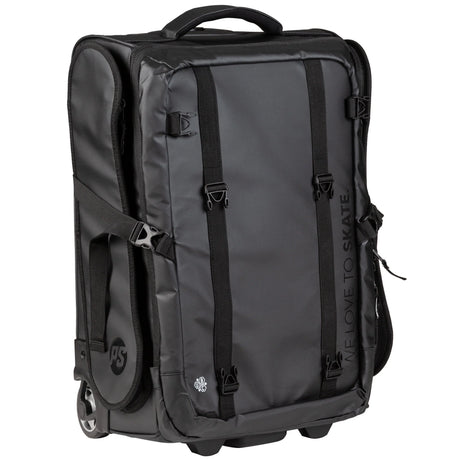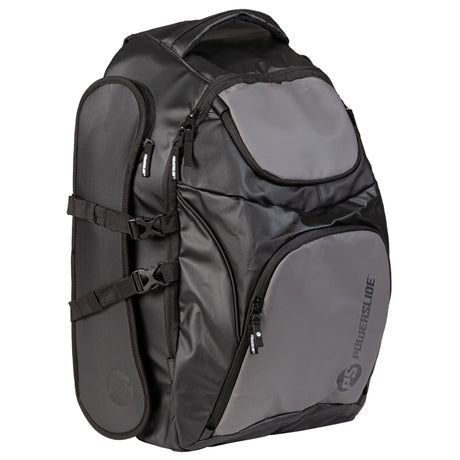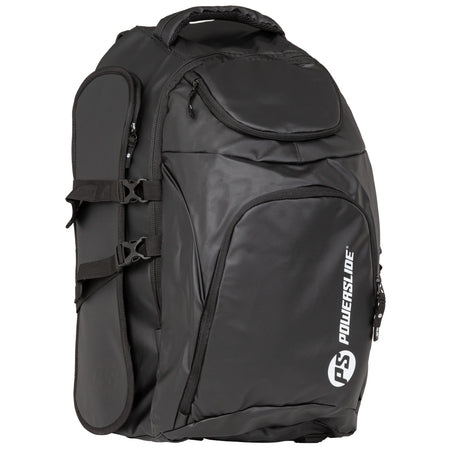Why buy two pairs of shoes when one is enough, or why purchase separate ice skates when you already have a comfortable pair of skates?
With the right ice blade conversion set, you can easily transform your inline skates into ice skates. This way, you can use your skates not only in summer on asphalt but also in winter on ice rinks or frozen lakes.
The big advantage: you can use the same skates all year round, there’s no need to get used to a new pair, and you save space.
This conversion is not only practical but also cost-effective and sustainable, perfect for anyone who loves skating in every season.
In this blog, we’ll show you what you need, what to watch out for, and how the conversion works, both with a detailed video tutorial and written instructions with photos.
With the right blades, you can turn your inline skates into true all-rounders!
Table of contents
- Video tutorial
- Which inline skates are suitable for conversion?
- Which ice skating blades do you need for the conversion, or which ones fit your inline skates?
- Step-by-step instructions: Converting your skates
- Tips for your skating experience and accessories
Ice skate blades for inline skates
1. Convert inline skates into ice skates – video tutorial
In the following video tutorial, we’ll show you how to convert or modify your inline skates into ice skates, what options are available, and what you need to pay attention to.
The great thing about it: it works with almost any inline skate and is super easy! This way, you can use your comfortable favorite skates all year round – on the streets in summer and on the ice in winter.
2. Which inline skates are suitable for conversion?
In principle, you can convert almost any inline skates into ice skates — whether they’re from Powerslide, USD, Roces, Razors, K2, Rollerblade, FR Skates, or any other brand. The only important factor is that the axle mounts (mounting points) or frame mounts are compatible.
When it comes to conversion, we distinguish between two versions or types of blades for inline skates:
- Blade frames with integrated blades – in this case, the entire frame is replaced.
- Insert blades, which are installed directly into the existing frame instead of the wheels.
2.1 Ice blade frames
Both options are easy to implement, but the first one, replacing the frame, is usually the simpler choice.
You only need to check which frame mounting type your inline skates use.
If both the blades and your skates share the same frame mounting standard, they can be swapped without any issues – regardless of shoe size.
Currently, we offer ice skate blades for the following mounting standards, which you can also find in our shop:
- Ice skate blades for the UFS mounting standard
- Ice skate blades for the Trinity mounting standard
2.2 Insert ice skating blades
The second option doesn’t depend on any specific mounting standard.
In this case, the frame stays on the skate, even riveted models can be used.
You simply remove the wheels by loosening the axles and then insert the matching insert blades.
This method is compatible with almost all inline skates. Best of all, you can also find all the replacement blades in our shop .
The following assembly standards are supported:
- Ice skate blades for the UFS mounting standard
- Ice skate blades for the Trinity mounting standard
- Ice skate blades for the dual-point mounting standard (e.g. 165 mm dual point – also shorter or longer versions)
- Ice skate blades for riveted frames
- Ice skate blades for the unibody mounting standard
(Unibody = shoe shell and frame are made from one piece)
In the next chapter you will learn which blades fit your inline skates and how to find the right model.
3. Which blades do you need for the conversion, or which ones fit your inline skates?
Before you decide on a ice blade frame or insert blades, we’d like to briefly explain the advantages of each system.
Advantages of an ice blade frame
An ice blade frame offers quicker and easier installation, more direct power transfer, and a lower center of gravity, all of which lead to better control on the ice.
Especially if you use inline skates with large wheels (e.g. 100 mm or bigger), we recommend a blade frame. Why?
The larger your inline skate wheels are, the greater the distance between the boot and the blade when using insert blades, meaning you stand higher, making skating less stable and more tiring for your feet.
Advantages of insert ice skating blades
Insert blades, on the other hand, are more affordable, independent of the frame mounting system, and take up less space during transport or storage.
For example, if you want to skate to the ice rink with your inline skates and simply attach the blades once you arrive, insert blades are especially practical: they’re compact, lightweight, and portable – ideal for a quick switch from street to ice and back.
3.1 Which ice blade frame fits my inline skates?
If you decide on an ice blade frame, you should check which frame mounting system your inline skates use before purchasing.
Only if the mounting system of the skate and the blade frame match can you mount the frame without any issues – regardless of shoe size.
What does frame mounting system mean?
The frame mounting system refers to the type of attachment used to connect the frame to your skate boot.
If your skate is riveted or a unibody model (meaning the boot and frame are one solid piece), you won’t be able to mount a blade frame.
If your skate is an UFS, 165 mm, 195 mm or Trinity skate, you can mount an ice blade frame.
UFS mounting system
Your inline skates have an UFS mounting system if:
- the frame is attached with two screws (one at the front, one at the back),
- The distance between the screw holes is approximately 167 mm.
- the underside of your skate is flat (no heel lift).
165mm or 195mm dual point mounting
Your inline skates have a 165 mm or 195 mm mounting system if:
- the frame is also attached with two screws
- the distance between the screw holes is either 165 mm or 195 mm.
- the sole is raised at the back, meaning your foot sits higher at the heel than at the front.
Trinity mounting system
Your inline skates have a Trinity mounting system if:
- the frame is attached with three screws (two at the front, one at the back),
- the sole has a heel lift.
Frame size and riding characteristics
Even though all frame models can generally be mounted regardless of shoe size, there are different lengths of the same model.
All sizes are compatible, the deciding factor is your preferred skating style:
- Shorter frames/blades: greater maneuverability, tighter turning radius, and more agile handling.
- Longer frames/blades: smoother glide, higher stability, and better straight-line performance.
3.2 Which insert ice skating blades fit my inline skates?
Unlike blade frames, the compatibility of insert blades is independent of your inline skates’ frame mounting system or shoe size.
If you choose insert blades to convert your inline skates into ice skates, you should make sure to check the following before purchasing:
- Removability of the brake:
First, check whether the brake on your inline skates can be removed. If it can, note that the axle used to attach the wheel and brake is often slightly longer than the other axles or screws that hold the wheels in place.
When you remove the brake mount, you’ll usually need a shorter axle or screw to secure the wheel or ice blade.
In theory, you could also reuse the longer original axle, but it would stick out slightly on the sides.
- Non-removable brake:
If you can’t remove the brake from your skates, make sure to check whether the total length of the blade you want is sufficient so that the brake doesn’t get in the way.
This is especially important for skates with large wheels, as mounting ice blades can lower your stance. As a result, the brake pad might touch and drag on the ice or ground while skating.
- Mounting points:
If you don’t have a brake installed or can remove it, you only need to check whether the mounting points of the blade align with those of your wheels.
The mounting points are the holes through which the axles or screws that hold your wheels in place are inserted. These are the exact same points where the insert blades will be mounted.
Most insert blades offer a certain amount of flexibility and are therefore compatible with many frame lengths and axle spacings. The blades are available for both kids’ inline skates and adult models.
The easiest way to check this is by placing a ruler or measuring tape tightly along the frame of your skates. This allows you to precisely measure the distance between the axle holes and then compare them with the mounting points of the ice blades.
If you choose one of our ice skate blades, you’ll always find at least one product image showing the exact spacing of the mounting points. You can directly compare these measurements with those of your skates.
And if you're unsure – feel free to contact us anytime!
We'll help you find the right blade for your inline skates.
4. Step-by-step instructions: Converting your skates
Below, we’ll show you how to mount the blades onto your inline skates.
For mounting the blades, you usually only need a 4 mm hex key, a 90° 4 mm hex key, or a T-25 Torx, depending on the ice blade model you’ve chosen.
In rare cases, a 3 mm hex key or another tool may be required.
- To install a blade frame, you first need to remove the existing frame from your inline skates.
- To install insert blades, remove the wheels that are mounted in the frame.
4.1 Assembling the ice blade frame
To mount an ice blade frame, you first need to remove the existing frame from your inline skates.
As an example, we’ll show you the process using a Powerslide Next skate with the Trinity mounting system.
Here, you need to loosen two front screws (left and right) and one rear screw.
To access the rear screw, it may be necessary to remove one of the two rear wheels. This will give you clear access to the screw and allow you to remove the frame easily.
Exactly as we previously removed the frame from our inline skates, we now mount the blade frame or ice skate blades.
With some mounting systems, for example, the Trinity mounting system, but also others, you have the option to slightly adjust the frame forward, backward, to the left, or to the right.
In general, the frame should be mounted in such a way that you achieve a straight and stable stance in your skates.
Alignment tip:
- If you tend to lean outward while skating, you should mount the blade frame, just like the original skate frame, slightly further to the outside.
- If you tend to lean backward, position the frame as far back as possible to achieve a more stable stance.
To align the frame precisely, tighten all screws only lightly at first. This allows you to shift and fine-tune the frame’s position. Once the blade frame (or your skate frame) is in the desired position, tighten all screws firmly.
If you notice that the screws tend to loosen slightly during use, apply a medium-strength thread locker (recognizable by its blue color). This blue paste is often already pre-applied to the threads of many screws.
Now you know everything you need to know to mount an ice blade frame on your inline skates – don't forget, in our shop you'll find a wide variety of different ice blade frames and skate blades.
4.2 Mounting the insert ice skating blades
To mount an insert blade or ice blade onto your inline skates, you first need to remove the existing wheels from your skates.
Use the appropriate tool to loosen all the axles and take out the wheels.
If your skates are equipped with a brake, you should, if possible, remove the brake first.
There are two basic types of brakes:
Brakes mounted directly on the frame:
These can usually be completely removed by simply loosening the mounting screws.
Brakes hooked onto the back of the skate boot:
In this case, you typically need to first loosen the screw or axle of the rear wheel and remove the wheel. After that, you can twist and pull the brake mount downward to remove it.
Please note: Not every skate has a removable brake.
On more affordable models or discount skates, the brakes are often permanently riveted or screwed to the shell or boot, making removal impossible.
After you’ve removed the wheels, take your ice blade and insert the first two spacers onto the blade.
The spacers are usually included with the insert blades. Their purpose is to position the blade centrally and align it correctly within the frame, ensuring it sits straight and securely.
Most common inline skate models, as well as those from well-known professional brands like Powerslide, FR Skates, or Rollerblade, typically use 8 mm axles. The “8 mm” refers to the diameter of the axles or screws that hold your wheels in place.
Many children’s inline skates, and even some adult models, however, use 6 mm axles. If you try to use a 6 mm axle to attach your blade with 8 mm spacers, you’ll notice that the blade wobbles or can’t be properly secured.
But don’t worry — that doesn’t mean it won’t work. You’ve just missed a small but important step. Inline skates with 6 mm axles use so-called 606 spacers or 6 mm bearing spacers. You can easily remove these from your skate wheels by carefully pushing out the bearings along with the small sleeves (spacers).
These spacers serve to increase the inner diameter of the axle mount from 6 mm to 8 mm, allowing standard 608 bearings to fit.
The same principle applies when mounting your insert blades: the small sleeve spacers are inserted into the blade spacers before you attach the ice blades and axles. This ensures a perfect fit and a secure, stable hold.
For mounting the ice blades, it’s best to start by attaching the blade at one of the middle mounting points first. This helps to stabilize the alignment and makes it easier to adjust the blade afterward.
Then, mount the remaining points and tighten all axles or screws evenly.
Make sure the blade is centered and not tilted, this ensures that your skate will later glide straight and provide optimal stability.
And your new ice skates are ready! You can also find the blades for them in our shop.
5. Tips for your skating experience and accessories
Now that you know how to convert your inline skates into ice skates and which blades you need, we’d like to share a few useful tips to wrap things up.
Blade care and sharpening
Most ice skate blades, insert blades, and blade frames come from the factory with only a basic pre-sharpening.
While this initial sharpening is generally sufficient to start skating right away, we recommend having your blades professionally sharpened for the best possible skating experience.
This service is often available directly at ice rinks or skating halls.
Check with your local ice rink or skating facility to see if they offer a sharpening service.
Care after use
After skating, you should always dry your blades thoroughly.
Simply use a towel or soft cloth to remove any moisture.
This protects your blades and skates from rust (corrosion) and significantly extends their lifespan.
Useful accessories
- Blade guards:
They protect the sharpening and edge of your blades, especially when walking off the ice or storing them at home. - Bags & Backpacks:
There are special ice skate bags and inline skate backpacks that allow you to neatly store your skates, accessories, and clothing.
Many models feature ventilation systems and separate compartments, making them especially practical and hygienic. - Training accessories:
Pucks, slalom cones, or markers are ideal tools to improve your control on the ice and make your training more fun and varied.
With these, you’ll be perfectly prepared to start the ice skating season safely, well-equipped, and with lots of enjoyment using your converted inline skates!

 Ice blade frames (left) & insert ice skating blades (right)
Ice blade frames (left) & insert ice skating blades (right) Trinity ice blade frames
Trinity ice blade frames UFS ice blade frames
UFS ice blade frames Insert ice blades – Powerslide Sabres
Insert ice blades – Powerslide Sabres Insert ice blades mounted – Powerslide Sabres
Insert ice blades mounted – Powerslide Sabres Riveted frame assembly
Riveted frame assembly Unibody frame assembly
Unibody frame assembly UFS frame assembly
UFS frame assembly 165 mm and 195 mm frame mounting
165 mm and 195 mm frame mounting
 Trinity frame assembly
Trinity frame assembly Skates with brakes
Skates with brakes Skates with the brake removed
Skates with the brake removed Inline skates with non-removable brakes – however, the brake pad is removable.
Inline skates with non-removable brakes – however, the brake pad is removable. Mounting points with play (oval slots)
Mounting points with play (oval slots) Powerslide Next – Trinity mounting system
Powerslide Next – Trinity mounting system Powerslide Next – Frame Disassembly
Powerslide Next – Frame Disassembly Powerslide Next – Frame Disassembly
Powerslide Next – Frame Disassembly Powerslide Trident Trinity Ice Blades – Assembly
Powerslide Trident Trinity Ice Blades – Assembly Powerslide Trident Trinity Ice Blades – Assembly
Powerslide Trident Trinity Ice Blades – Assembly
 Inserting the spacers
Inserting the spacers Mounting the ice skate blades
Mounting the ice skate blades Mounting the ice skate blades
Mounting the ice skate blades Inline skates with mouinted ice skate blade
Inline skates with mouinted ice skate blade
